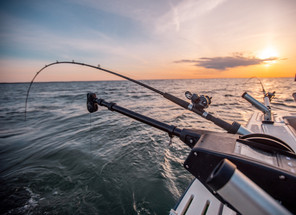Posted by Chris Larsen on 29th Jan 2021
Trolling Speed
USING PROBE SPEED TO CATCH FISH
On large bodies of water, wind and bottom structure work together to create underwater currents that are undetectable at the surface. The collision of warm and cold water also creates water movement. Understanding these currents is critical to trolling success.
Subsurface currents can drastically change your lure speed, making your presentation look unnatural. Trolled against the current, lures can wobble too fast or "burn out." Trolling with the current can leave lures dead in the water. Using a Fish Hawk System tells you what is happening at the depth of your lure.
The Fish Hawk Probe relays speed information from the downrigger ball to the angler. When trolling against a current, anglers must slow the boat down to keep the lure working at optimal speed; trolling with a current the angler needs to speed up.
Each style of lure has an optimal trolling speed. Good trolling spoons work over a range of trolling speeds, as do flashers (rotators) teamed with tinsel flies. Metal dodgers or plastic paddles with flies or meat rigs require slower trolling speeds. As do cut plugs used for salmon. Crankbait speeds vary by lure model. Spinner worm harnesses used for walleye are typically trolled slower.
TYPICAL TROLLING SPEEDS BY LURE TYPE:
Trolling Spoons 1.8 - 3.0 MPH
Flasher with fly 1.5 – 3.0 MPH
Metal dodgers/Paddles 1.5 – 2.4 MPH
Cut Plugs 1.6 – 2.5 MPH
Crankbaits 1.0 - 4.0 MPH
Spinner worm harness 0.8 - 2.8 MPH
It is important to realize that the most productive speed may vary from day-to-day and even hour-to-hour! Allow the fish to tell you what they want. Fish Hawk provides you a mechanical speed that is 100% repeatable. Find the Probe speed that is producing bites on your boat and repeat it until it stops working.

